

Photographs can be seen in our Volvo Gallery
Sixes from Volvo - A smooth 80 year affair
17 March 2009
The four-cylinder 2 litre engine of the first Volvo series of cars had just about started to rev up when it was replaced with a bigger, smoother and more powerful six-cylinder engine, just like those that many of Volvo's American competitors were beginning to introduce. 2009 marks the 80th anniversary of the DB engine and since 1929, apart from a ten year gap in 1958-1968, Volvo cars have been offered with six-cylinder engines. This is the story behind these cylinders in brief.
Even after only about 1,000 DA engines had been made, their supplier Penta Works had to re-tool for the production of a six-cylinder Volvo engine. The decision to make it was as old as the Volvo car itself, in fact even older, because even before the ÖV4 went into production it was clear that a six should be made available as soon as possible. The reason behind this was not only that the competition had started to feature six-cylinder engines, but also the fact that right from the start Volvo had planned the production of heavier vehicles. But two years went by before the sixes arrived.
Why six cylinders?
Why not develop the existing four-cylinder engine? Why use a six? The straight four has its inherent limitations as an engine type. To put it simply, the smaller the four, the smoother it runs. Since one pair of pistons moves up in the cylinders when the other pair is coming down (the usual firing order is 1342), vibrations are created and the smaller the pistons, the less the vibrations, i.e. the source of disturbance. In a four-cylinder engine this source is called the "free masses of force of the second order" and consequently these masses should be limited. The capacity of a four should therefore preferably not exceed 2.5 litres for comfort reasons.
2.5 litres and above, however, are perfect sizes for a straight six engine. Six pistons, however large, describe a different and more even movement because of their firing order, usually 15364, and balance each other. The size has no limit on comfort grounds. There have been many large six-cylinder engines in the world over the years, even going up to 25 litres, and the current top range of FH models from Volvo Trucks features 16 litre engines. With size comes performance, emphasising the old slogan "There is nothing to beat cubic inches". [This, however, is only partly true in the era of superchargers and turbochargers.]
The first six
In the spring of 1929, the DB engine saw the light of day fitted to the equally new Volvo PV651, a car both larger and more comfortable than the ÖV and PV4 models. The 6 indicated the number of cylinders, 5 the number of seats and 1 stood for the first version of the new series. The DB engine was a conventional piece of machinery; all cast iron with side valves - the valves standing on the side in the block rather than being located in the cylinder head - and with a capacity of 3010 cc. With a 55 hp power output it easily brought the car past the 100 kph mark. An unusual and slightly extravagant detail was the heavy seven-bearing crankshaft which was both statically and dynamically balanced. Good fuel economy in those days meant anything less than 20 litres per 100 km, and the new six was considered to be very economical indeed and also proved very reliable and long-lasting. Those two properties were to characterise all D and E engine versions over the years.
The DB engine came to be the very foundation on which the entire Volvo passenger car engine development was based during the 1930s. Several truck and bus engines were also based on it, and it appeared that it had the potential to power different Volvo vehicles all the way through to 1958. From the original 3010 cc and 55 hp many versions were developed, finally concluding with the ED version of 3670 cc and 91 hp. This is an engine which in terms of performance is still able to meet the demands of modern day traffic. The side valve engine as a design, however, was running on overtime even in 1958. But these engines were immensely strong, quiet and smooth, and also practically impossible to wear out. "Ask the man who owns one", to make use of an old slogan of another quality brand of cars.
From the side up to the head
Even before the production of the ED engine had come to a halt in the Skövde engine plant, Volvo's engineers had started work on a new and more modern six-cylinder engine for the future - ten years in the future, to be precise. From 1958 Volvo cars were not available with six-cylinder engines for some years. The four-cylinder B16-, B18- and B20-engines in their many different versions were to power Volvo cars for the next ten years until 1968.
The project designated 358, which was meant to be a new large Volvo, was initially supposed to use the V8 engine which Volvo had fitted to the Philip prototype in 1953. This engine, however, found its way instead into the Volvo Snabbe light truck under the name of B36. The 358 project took a different turn and went for a straight six of 2.7 litres capacity, eventually enlarged to 3 litres. And the work was very cleverly done.
Although the term modular engine hadn't yet been invented, this was exactly how the new B30 engine was designed, based on the same, well-proven principles as the famous four-cylinder B18. This engine, in turn, became the B20 and was introduced at the same time as the B30 in the autumn of 1968. The engines had the same design advantages and features that had given the B18 its well-deserved reputation for reliability and long service life. The dimensions of the B30 cylinder were the same as those of the B20, 88.9 x 80 mm for bore and stroke. The modular engine philosophy was further accentuated by the fact that pistons, conrods, valves and valve mechanism components were interchangeable between the B20 and B30 engines.
Long, slim and clean
The new car that received the new B30 engine was called the Volvo 164. Again the combination of digits gave away the number of cylinders, even if the 6 was placed in the middle this time. With an output of 130 hp DIN, a 196 Nm maximum torque and the typical smoothness of a six, the engine was on a par performance-wise with most other 3 litre sixes on the market, albeit not one of the most modern with its pushrods and cast iron design. But in one area Volvo was the leader: a system for reducing the exhaust emissions was a standard item when the car was introduced.
The principle was simple if you look at it today: a thermostat controlled the carburettors which kept the fuel/air mixture constant irrespective of ambient temperature and auxiliary valves in the intake manifold which caused the mixture to vaporise under forced swirl. This led to exhausts with low levels of both carbon monoxide and hydrocarbons. At higher revs the valves were fully open and the mixture could pass straight into the combustion chambers without vaporising since combustion was already adequate. The use of catalytic converters was still far away in the future.
In 1971 the B30 engine was fitted with electronic fuel injection (B30E) which boosted power by a further 30 hp. With 160 hp DIN under his right foot, the driver of a 164E had command of Volvo's most powerful engine to date. Nevertheless, the engine was an anachronism, a mixture of things old and new, but it was Volvo's own and it was an in-line engine. The next six to appear in Volvo cars was the result of international cooperation and it was a V engine.
From straight to V
At the beginning of the 1970s, Volvo entered into an engine project which was jointly run by French auto-makers Peugeot and Renault. The aim was to create a modern V8, but time and reality caught up with the project and forced it to become a V6 engine instead. This PRV project meant shared development costs and common production in a new engine plant in Douvin, France. The first version to emerge was the engine that in the autumn of 1974 found its way into the new Volvo 264. It was an all-alloy 2.7 litre V6, appropriately named B27E. The 90 degree V angle gave away the fact that it had started life as a V8 but "lost" two cylinders along the way. Each bank of cylinders had a single overhead camshaft with chain drive, and the output was a modest 140 hp at 6000 rpm with a max torque of 200 Nm, which was less than the old B30E.
Of course the PRV engine was also developed and improved over the years. It was enlarged to 2.8 litres and fitted with a number of new features, most of them within the ignition, injection and exhaust control areas, but with only 156 hp on tap in its final version (1987-1990) the engine still lacked that little extra that is expected from the performance of a six-cylinder engine. The PRV engines were no miracles either in terms of performance or in terms of fuel economy, but smooth and pleasant in operation, and reliable provided they were serviced regularly and properly according to the instructions. The shorter and considerably lighter V6 engine required less space than the long B30 and found its way into a number of different cars besides the Volvo 260, 760 and 780. The latter were fitted with the version called B28E when it was introduced in 1982.
And back again
The 260 models disappeared in 1985, and when the 760 was replaced with the new 960 in the summer of 1990, the V6 from France was also replaced with a brand new six-cylinder engine, in aluminium with the cylinders in-line and with just under 3 litres capacity. It was the first example of a new modular engine family - the N series - which still forms the basis of the current Volvo engine programme and with the six-cylinder version turned through 90 degrees since 1998.
The largest version was introduced first. It was called the B6304F but affectionately referred to in-house as the N3P by Volvo engineers. It had been designed and developed in Gothenburg with the aid of Porsche in Stuttgart, primarily in relation to the design of the cylinder head. It was built in Skövde in an entirely new engine plant and was strikingly characterised by state-of-the-art technology such as low weight, compact size, double overhead camshafts, multi-valve technology, advanced combustion chamber
The output was above the magic 200 hp limit, 204 hp at 6000 rpm, and it had a maximum torque of 267 Nm. Whereas the V6 had been accused of being both tired and noisy, this new engine was responsive and smooth as silk. This was a six-cylinder Volvo engine worthy of the proud heritage and tradition that had begun more than 60 years earlier.
Like the modular engine it was, it was soon accompanied by the sensational five-cylinder version that went into the new 850 GLT, and was turned 90 degrees in the engine compartment, and a couple of years later also the four-cylinder version for the S40 and V40 models.
But turned around and blown
The in-line six-cylinder engine, in this form, stayed on until 1998 when the S90/V90 (960) ceased production, thereby ending the era of the conventionally-designed Volvo with longitudinal engine and rear wheel drive. That year the six-cylinder engine was also turned sideways, the powertrain made into a power pack driving the front wheels and the car that received it was the new Volvo S80, a brand new car and the first one of many to follow based on the same new technical platform.
In order to fit a six-cylinder engine transversely into an engine compartment it must be very compact and the new B6304S was indeed very compact, in most respects a development of its predecessor but modified to drive through the pair of wheels that sat beside it. The engine was also offered in two versions right from the start: a 2.9 litre normally-aspirated 204 hp version and a slightly scaled down 2.8 litre version with twin turbochargers (B6284T) that boosted power to a breathtaking 272 hp and a hefty 380 Nm of torque, available all the way from 2000 rpm up to 6000 rpm. This S80 version was called the T6. It is hardly necessary to add that this engine completely superseded Volvo's performance record to date.
The T6 also went into the first generation of SUVs from Volvo, the XC90, when it was launched in 2002. This meant a bigger challenge for the engine, because this car was both heavier and larger than other Volvos but the engine was in addition also driving the rear wheels, making the car a six-cylinder four wheel drive.
As in all other areas at Volvo, the development work on engines also moves rapidly forwards. The engineers continued to develop the modular engine family and the result of this work was a new, larger, normally-aspirated 3.2 litre version introduced in 2006 with better performance, while at the same time emissions were further cut and fuel economy was improved. The T6 was also slightly enlarged, and with that came more horsepower and torque. Both these engines were designated for use in the S80 and XC90, transversely mounted and driving through all four wheels.
The straight six-cylinder engine design was born shortly after the turn of the 20th century and has been continuously developed and refined over the years. It has been chosen by many famous car makers, among them Volvo, as the main source of power for their cars and it is still a design with a great deal of potential. Even if today's trends point in another direction, towards smaller engines and a slow but realistic transition to alternative sources of power in the future, the silk-smooth six will still be around to enjoy for many years to come.
Bonus trivia for the enthusiast:
The fact that development has moved forward with new and better solutions, better materials combined with a bolder attitude towards the use of new technology over 80 years is clearly illustrated by this little compilation, a comparison between the main six-cylinder engine types from Volvo during the 1929 - 2009 period:
Type |
Capacity cc |
HP |
Torque (max Nm) |
Output (HP) per litre |
DB 1929 - 1931 |
3010 |
55 |
160 |
18 |
ED 1935 - 1958 |
3670 |
91 |
215 |
25 |
B30* 1968 - 1974 |
2978 |
130 |
196 |
44 |
B27E 1974 - 1980 |
2664 |
141 |
210 |
53 |
B280 1980 - 1990 |
2849 |
156 |
245 |
55 |
B6304F** 1990 - 2006 |
2922 |
204 |
267 (280) |
69 |
B6284T*** 1998 - 2006 |
2783 |
272 |
380 |
98 |
B632S 2006 - |
3192 |
238 |
320 |
75 |
B6304T2*** 2006 - |
2953 |
285 |
400 |
97 |
The average Formula 1 engine for the 2009 season has an output/litre ratio of approx 350 hp
* For B30E the figures are 160 hp, 230 Nm and 54 hp/litre respectively
**B6304F 1990 - 1998, after that B6304S 1998 - 2006
***Turbocharged
The truly dedicated fact-finder may ask himself why the D24 from 1978 isn't included in this compilation of Volvo sixes. There are two reasons for that. One is the fact that it was bought from an outside supplier and really just happened to be a six rather than having been ordered as such, and the other is that it was a diesel engine and as such does not belong to the Volvo tradition of six-cylinder Otto-engines.
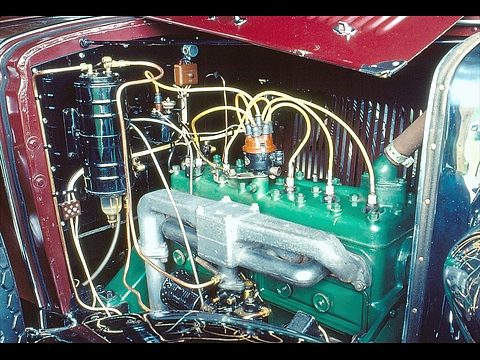
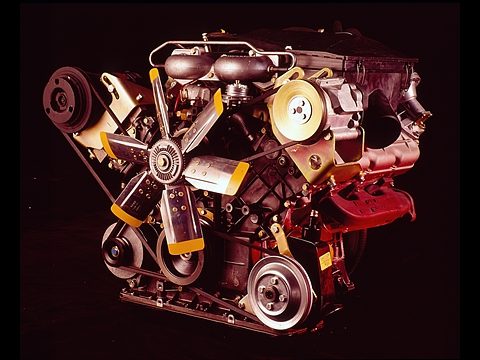
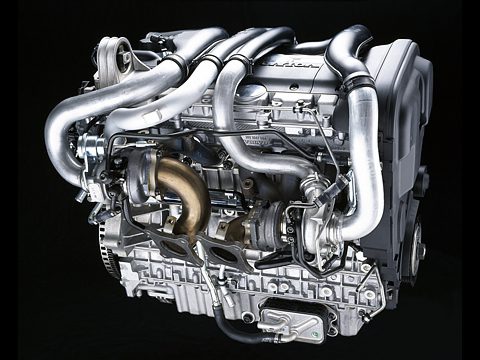
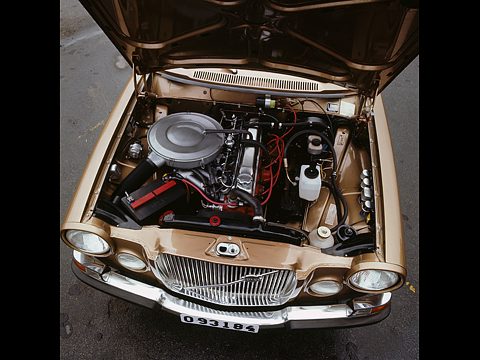
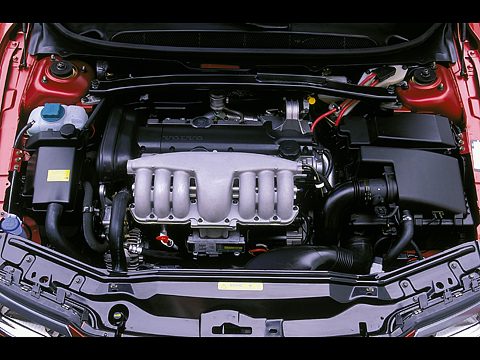
Legal | Privacy | Contact Us | Search | Site Map
Volvo Owners' Club Limited® 1962-2025

